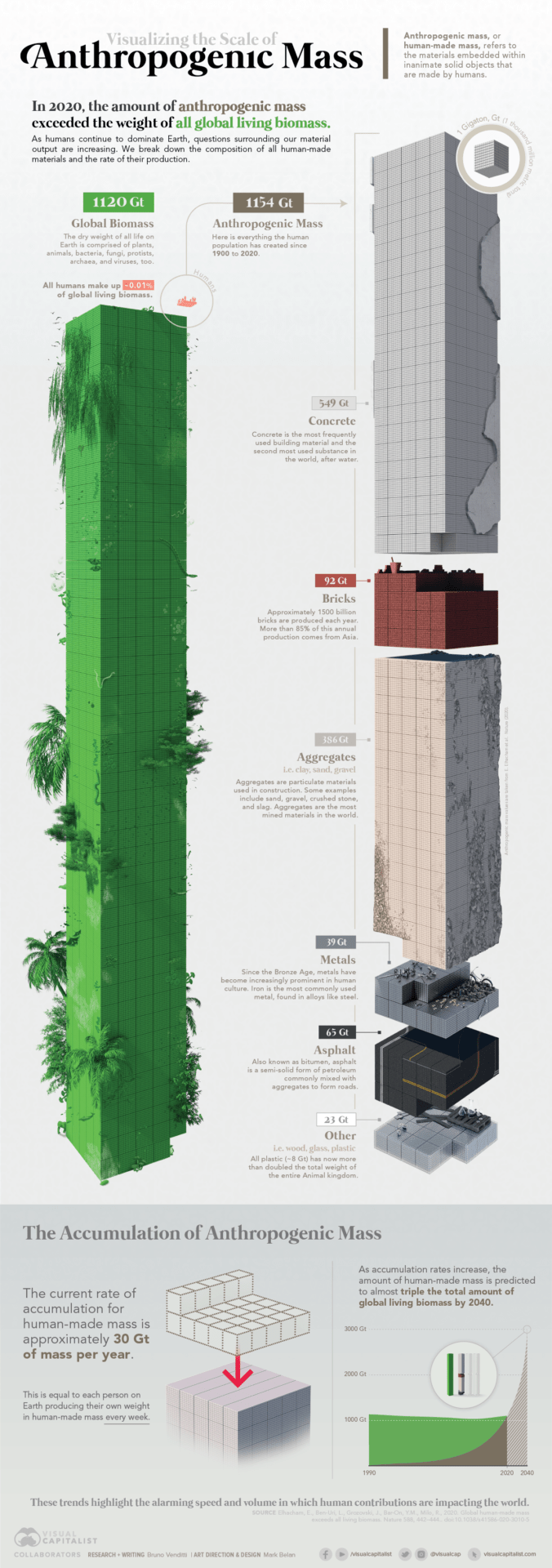The accumulation of human-made mass on Earth
Although this visualization of the accumulation of human-made mass on Earth is not specifically related to cities, one has to recognize that the 549 gigatons of concrete, 65 gigatons of asphalt, the 92 gigatons of bricks, and the 386 gigatons of aggregates are evidently concentrated in large part in cities.
The graphic, based on a study published in Nature, shows in dramatic fashion just how much we have built, especially when contrasted with the global biomass.
In 2020, the amount of human-made mass, or anthropogenic mass, exceeded for the first time the dry weight (except for water and fluids) of all life on Earth, including humans, animals, plants, fungi, and even microorganisms. […]
Over the past century or so, human-made mass has increased rapidly, doubling approximately every 20 years. The collective mass of these materials has gone from 3% of the world’s biomass in 1900 to being on par with it today. […]
Every year, we extract almost 90 billion tons of raw materials from the Earth. A single smartphone, for example, can carry roughly 80% of the stable elements on the periodic table.
It’s a good visual to recognize our impact and the need to rethink our cities and lifestyles.

